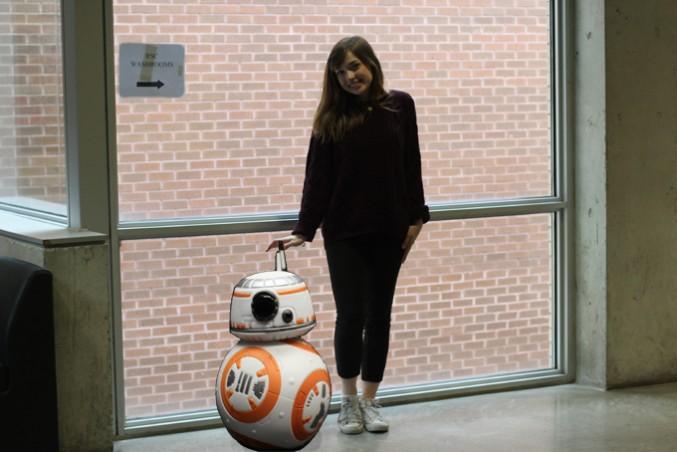By Justin Chandler
C-3PO may be fluent in over six million forms of communication, but helping people with mental illnesses is something he cannot do. Fortunately for those who need it, researchers at Ryerson are developing a model for a robot that could help people manage anxiety.
Along with Ryerson communications professor Frauke Zeller, communication master’s student Lauren Dwyer is researching existing robots to develop a model for one that could monitor human behaviour and respond to it. Dwyer plans to present the model in her major research project (MRP), which is due in September.
The model will likely detail what the robot could look like, how it could communicate and what problems she could come across in creating it, Dwyer said. Testing and the technical creation of the robot should come later.
To develop the model for the robot, Dwyer is studying three different robots including Sphero’s BB-8 toy, which is based off a robot in the new Star Wars film. Dwyer plans to pick aspects of the three she studies to include in her model.
A lot of people in Dwyer’s life have some form of mental illness, she said. Dwyer said her project presents an opportunity to do therapy better.
“Getting help is hard. Looking for a therapist and trying to find coverage is a long road,” Dwyer said, adding that therapy can be too expensive for students.
Dwyer works for #SickNotWeak, a non-profit organization that raises money for mental-health education and community support. She said she isn’t looking to replace therapy dogs or mental-health professionals, but thinks companion robots could be more useful than standard mental health resources in some situations.
Dwyer said she’s been in situations where she’s needed help but wanted to be alone. She thinks a robot that could have comforted her would have been ideal then.
Zeller co-manages HitchBOT, the hitchhiking robot whose travels have been reported on by The Eyeopener and international media.
In an email, Zeller wrote there is precedent to this project in the form of “very interesting” research into robotics and health, such as studies into robotic companions for children with autism and robots for helping people with dementia.
Dwyer studied BB-8 and plans to look at French robotics-company Aldebaran’s NAO robot. The NAO is a humanoid robot used to communicate with children with autism. One exists at Ryerson. Dwyer has not decided what third robot she’ll study.
Dwyer, a Star Wars fan, enjoyed studying BB-8.
The toy, which Dwyer calls “the best companion next to a dog,” makes sounds and movements in reaction to its surroundings when in “patrol mode.” Dwyer has found it necessary for a robot to communicate through movement and sound in order for it to connect with a person.
She said she hopes to develop a model for a robot that is not just reactive, but proactive. One that could, for example, monitor the symptoms leading up to an anxiety attack and act before the attack occurs.
Zeller said her work on projects such as HitchBOT and art critic robot KulturBot provides insights into how people may interact with a robot companion. She said people have become very creative in interacting with those robots “so integrating participatory design into the development of robot companions can provide new insights and enhance acceptance of robots in our daily lives.”










Leave a Reply